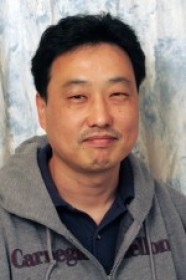
1:00 pm to 2:00 pm
Event Location: GHC 2109
Bio: Dr. Young-Woo Seo is currently a post-doctoral fellow, working with GM-CMU
Autonomous Driving Collaborative Research Lab (AD-CRL) and the Robotics Institute, Carnegie Mellon University. During his post-doctoral period, he has been working on developing robust perception algorithms for reliable autonomous driving. His tasks involve in developing computer vision algorithm for understanding the local geometry of urban streets, for recognizing highway workzones, for fusing sensor measurements in different modalities (e.g., thermal imaging), for traffic light detection and state inference, and for longitudinal localization.
Dr. Seo received his Ph.D. and M.S. degrees in Robotics from the Robotics Institute, School of Computer Science, Carnegie Mellon University. He also received a M.S. degree in Computer Science from Seoul National University and a B.S. degree in Computer Science from Konkuk University.
Abstract: For safe urban driving, keeping a car within a road-lane boundary is a critical
prerequisite. It requires human and robotic drivers to recognize the boundary of a road-lane and the vehicle’s location with respect to the boundary of a road-lane that the vehicle happens to be driving in. To provide such a perception capability, we present a new computer vision system that analyzes a stream of perspective images to produce information about a vehicle’s relative location to a road-lane’s boundary, and information about the detecting of lane-crossing and lane-changing maneuvers. To assist the vehicle’s lateral localization, our algorithm also estimates the host road-lane’s geometry, including the number of road lanes and their widths. The local road geometry estimated by frame-by-frame may be inconsistent over frames due to variations in the image features. To handle such inconsistent estimations, we implement a Bayes filter to smooth out, over time, the estimated road geometry. Tests on inter-city highway showed that our system provides stable and reliable performance in terms of computing lateral distances and detecting lane-crossing and lane-changing maneuvers.
